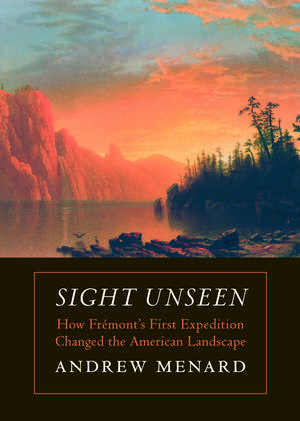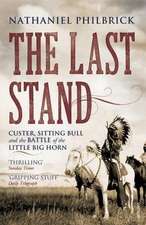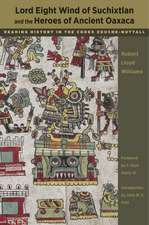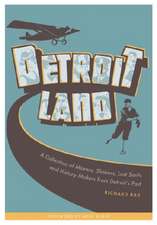Sight Unseen: How Frémont's First Expedition Changed the American Landscape
Autor Andrew Menarden Limba Engleză Paperback – 31 aug 2018
John C. Frémont was the most celebrated explorer of his era. In 1842, on the first of five expeditions he would lead to the Far West, Frémont and a small party of men journeyed up the Kansas and Platte Rivers to the Wind River Range in Wyoming. At the time, virtually this entire region was known as the Great Desert, and many Americans viewed it and the Rocky Mountains beyond as natural barriers to the United States. After Congress published Frémont’s official report of the expedition, however, few doubted the nation should expand to the Pacific.
The first in-depth study of this remarkable report, Sight Unseen argues that Frémont used both a radical form of art and an imaginary map to create an aesthetic desire for expansion. He not only redefined the Great Desert as a novel and complex environment, but on a summit of the Wind River Range, he envisioned the Continental Divide as a feature that would unify rather than impede a larger nation.
In addition to provoking the great migration to Oregon and providing an aesthetic justification for the National Park system, Frémont’s report profoundly altered American views of geography, progress, and the need for a transcontinental railroad. By helping to shape the very notion of Manifest Destiny, the report became one of the most important documents in the history of American landscape.
The first in-depth study of this remarkable report, Sight Unseen argues that Frémont used both a radical form of art and an imaginary map to create an aesthetic desire for expansion. He not only redefined the Great Desert as a novel and complex environment, but on a summit of the Wind River Range, he envisioned the Continental Divide as a feature that would unify rather than impede a larger nation.
In addition to provoking the great migration to Oregon and providing an aesthetic justification for the National Park system, Frémont’s report profoundly altered American views of geography, progress, and the need for a transcontinental railroad. By helping to shape the very notion of Manifest Destiny, the report became one of the most important documents in the history of American landscape.
| Toate formatele și edițiile | Preț | Express |
|---|---|---|
| Paperback (1) | 137.32 lei 3-5 săpt. | |
| BISON BOOKS – 31 aug 2018 | 137.32 lei 3-5 săpt. | |
| Hardback (1) | 168.25 lei 3-5 săpt. | |
| Bison Original – 30 sep 2012 | 168.25 lei 3-5 săpt. |
Preț: 137.32 lei
Nou
Puncte Express: 206
Preț estimativ în valută:
26.28€ • 27.34$ • 22.03£
26.28€ • 27.34$ • 22.03£
Carte disponibilă
Livrare economică 20 februarie-06 martie
Preluare comenzi: 021 569.72.76
Specificații
ISBN-13: 9781496205599
ISBN-10: 1496205596
Pagini: 288
Ilustrații: 2 photographs, 22 illustrations, 4 maps, index
Dimensiuni: 152 x 229 x 22 mm
Greutate: 0.42 kg
Editura: BISON BOOKS
Colecția Bison Books
Locul publicării:United States
ISBN-10: 1496205596
Pagini: 288
Ilustrații: 2 photographs, 22 illustrations, 4 maps, index
Dimensiuni: 152 x 229 x 22 mm
Greutate: 0.42 kg
Editura: BISON BOOKS
Colecția Bison Books
Locul publicării:United States
Notă biografică
Andrew Menard is an independent writer, artist, and critic. His work has appeared in the Georgia Review, Antioch Review, the New England Quarterly, Western American Literature, Journal of American Studies, and Oxford Art Journal. He is the author of Learning from Thoreau.
Cuprins
List of Illustrations
Introduction: The Golden Meane
Part 1. Picturesque America
The Great Desert
The Hudson Valley
Eastern Kansas
Courthouse Rock
Yellowstone
All the Different Parts of Our Country
Part 2. Westward the Course of Empire
The Mouth of the Oregon
Westward the Course of Empire
The Loftiest Peak of the Rocky Mountains
The Barometric Reading
The National Flag
Bromus, the Humble Bee
The Four Cardinal Rivers
To the Pacific and Beyond
Afterword: The Eye That Has Not Seen
Notes
Index
Introduction: The Golden Meane
Part 1. Picturesque America
The Great Desert
The Hudson Valley
Eastern Kansas
Courthouse Rock
Yellowstone
All the Different Parts of Our Country
Part 2. Westward the Course of Empire
The Mouth of the Oregon
Westward the Course of Empire
The Loftiest Peak of the Rocky Mountains
The Barometric Reading
The National Flag
Bromus, the Humble Bee
The Four Cardinal Rivers
To the Pacific and Beyond
Afterword: The Eye That Has Not Seen
Notes
Index
Recenzii
"Anyone interested in how Americans transformed western lands from obstacles into symbols of national achievement will find much of value in Menard's work."—Jared Orsi, Kansas History
“[A] sharp and canny synthesis. . . . Most impressive in Sight Unseen is the meticulous way Menard makes his case that [Frémont’s] imaginative transformation was a textual one.”—Robert Thacker, Western American Literature
"Through the imaginative eyes of Frémont, Menard makes significant strides in linking the words of the explorer and naturalist to the cultural concept that would shape the future land use and settlement of the American West."—Camden Burd, Historical Geography
"Crisply written, deliciously illustrated."—Ryan Boyd, Great Plains Quarterly
"Sight Unseen is a rigorously researched, exceptionally astute, and well-reasoned interdisciplinary study of a report that defined America's emerging ideology of progress. It is a splendid contribution to the historiography of both Frémont and nineteenth-Century America."Fred MacVaugh, Nebraska History
"[Sight Unseen is] a well-written work revealing an essential part of the history of the North American continent."—G.J. Martin, Choice
“Sight Unseen is a book for anyone who loves maps, landscape, and historical intricacy. . . . Anchored by the image of the explorer waving his nation’s flag from a mountain peak, Menard’s account of Frémont’s expedition enlivens the rhetoric of a triumphal national narrative. Like the explorer’s Report, Sight Unseen melds scientific, symbolic, and aesthetic views of a nation that knew no bounds.”—Lucy R. Lippard, author of Down Country, winner of the Caroline Bancroft History Prize
“Eloquent, lively, and learned, with an intellectual breadth as wide as a Rocky Mountains horizon, Andrew Menard’s Sight Unseen ably reconnoiters geographies of both imagination and terra firma. This fascinating book recovers the American West as John Frémont found it and shows us how the explorer taught us to see American landscapes—and America itself—anew.”—Tom Chaffin, author of Pathfinder: John Charles Frémont and the Course of American Empire















